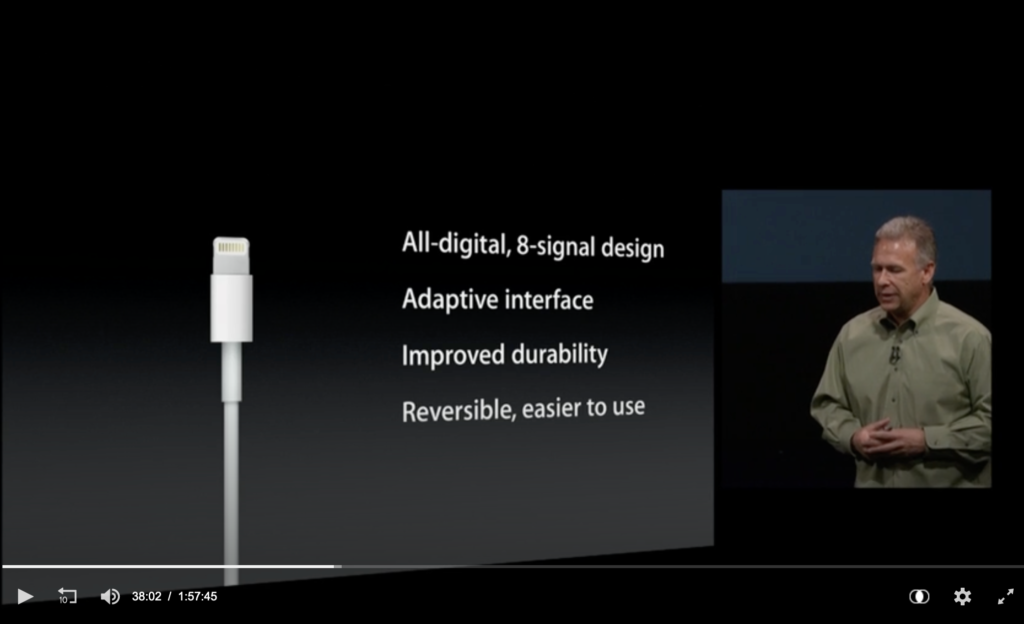The Apple September Event was the other day and like these events always seem to do (and WWDC is no different) is kick up the hornets nest of the Apple haters. This years hot topic: USB-C! All the Apple haters I’ve seen have been spewing the same piece of misinformation over and over: “Apple was forced by the EU to change to USB-C!” No, they weren’t. And guess what. I come with receipts.
Lightning, USB-C, and the EU
First, let’s start with the EU. It’s no secret that the EU is very consumer friendly. You can thank them for GDPR (which the cost of compliance made it so that generally, every company will comply even with non-EU resident requests; there are some that are being difficult about it and will only process requests from EU residents, but that is not the point of this blog post), and all those cookie notices on every website. But the best pro-consumer move they made was making it a law that all mobile devices sold in the EU need a common charging port – and that port is USB-C. IANAL, and definitely know less about European law than US law, but it states that “by the end of 2024, all mobile phones, tablets and cameras sold in the EU will have to be equipped with a USB Type-C charging port.” Key phrase there is end of 2024. That is, starting January 1, 2025, all mobile phones, tablets, and cameras sold must charge with USB-C.
So how did we get here? Well, let’s roll the clock back to the Apple Special Event of September 2012. During this event, Phil Schiller announced the new Lightning connector. He said, and it’s right around the 38:02 mark, “This connector is a modern connector for the next decade.”

Why did Apple invent Lightning? Apple doesn’t publicly say why they do things, but the writing is kind of obvious. First, there were some serious limitations with the 30-pin connector Lightning replaced. The 30-pin carried USB, FireWire, some controls, and audio signaling. Mostly, it was dedicated to FireWire and Apple was already moving past FireWire at this stage and needed to keep revising the 30-pin when new features were added like video. Apple needed something universal and while USB did have Mini-A, Mini-B, Micro-A, and Micro-B types, these connectors just weren’t what Apple needed. Lightning was an 8-pin connector and it was reversible! This is something that the USB Mini/Micro A/B ports lacked.
Also, at this time USB-C was still two years away from being published in 2014. Apple needed something that fit their needs now and since open standards move slower than proprietary connectors, Apple took the initiative and made their own solution to their problem. But Apple was smart enough to know USB-C was the future. After all, the redesigned MacBook in 2016 featured USB-C only (and people were outraged!). While USB sorted out their standards, Apple eventually moved the iPad Pro to USB-C in 2018. By this point, the writing was on the wall of what was coming.
As the years continued, more and more of Apple’s devices marched towards USB-C, dropping Lightning until finally, in 2023, 11 years after Phil said that Lightning was for the next decade, here we are: All of Apple’s phones and tablets are now using USB-C.
So no, this was not about the EU. If Apple really wanted to, they could, technically have left the iPhone 15 on Lightning and maybe even the iPhone 16. After all, the law says by the end of 2024. The iPhone 17 would have definitely have to had moved to USB-C. Instead, USB finally caught up and became the true universal serial bus it was meant to be. Sorry Apple haters, Tim Cook is not crying over Lightning. Just you.
PC vs Mac / Android vs iPhone
With USB-C out of the way, the other thing I noticed is the annual chorus of “Android is better!” And you know what? It is. For you. For me, iPhone is better. For you, Windows might work as your daily driver. For me, I prefer macOS. And no, it’s not what you think. I actually have been using an iPhone longer than I’ve been daily driving macOS. I actually switched to macOS as my daily driver in 2018. I work primarily on Unix and Linux systems. I also need to interact with Corporate America. So I settled on macOS. It’s Unix. It works with Corporate America.
Either way, these arguments remind me of the petty fights of the early 2000s (and even earlier) about which system is better. At the end of the day though, these systems are tools in a toolbox to get a job done – whether that “job” is work that pays bills or just relaxing.
Just tools
At the end of the day, an iPhone, a Samsung Galaxy S<Insert Number Here>, a Dell Latitude, and a MacBook Pro are just tools. My toolbox isn’t better than your toolbox and quite frankly, I don’t care what toolbox you have or use. A residential handyman is going to have a different toolbox and tools than a commercial handyman. A residential HVAC tech is going to have different tools than a residential electrician. And a residential electrician is going to have similar, but different tools than a commercial electrician.
At the end of the day, it’s less about what tools you use but more about what you create with them.
